

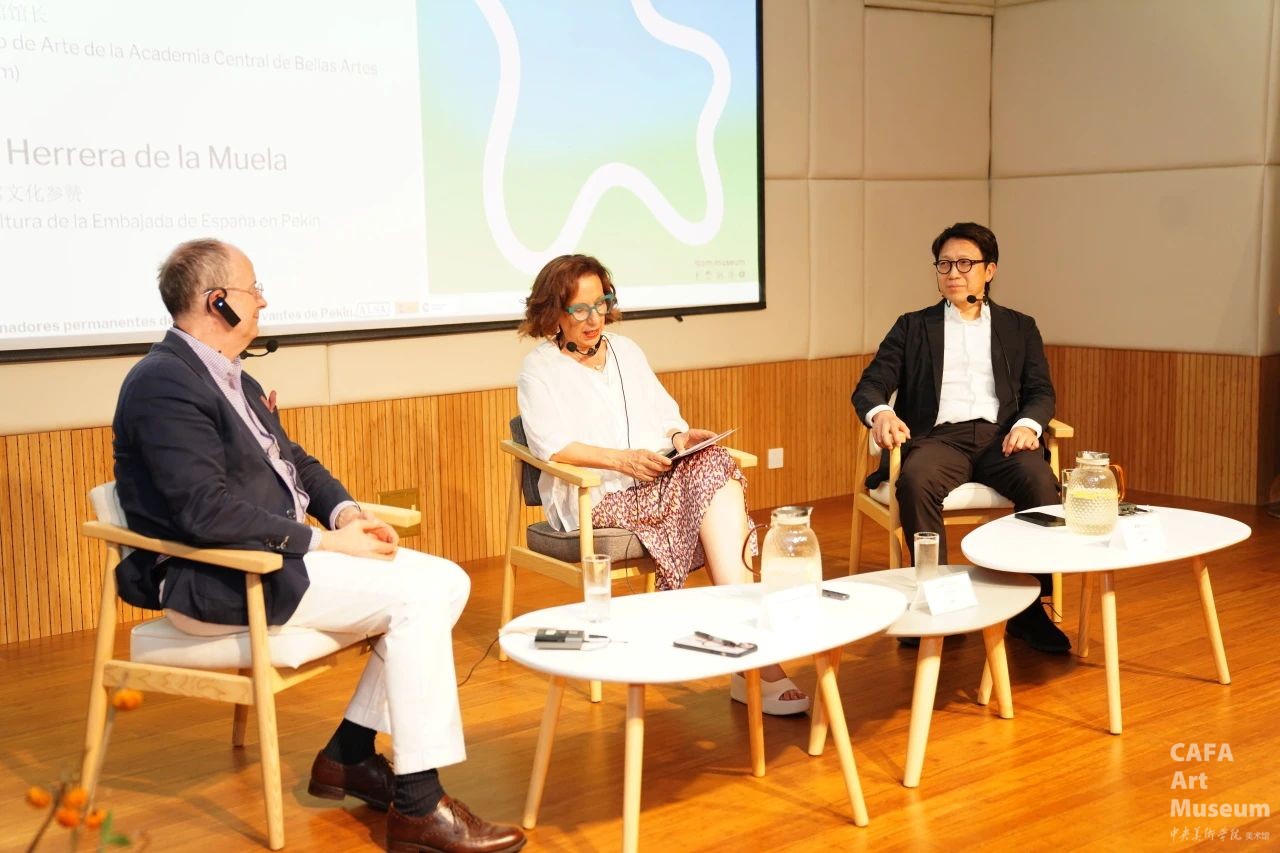
On May 28th, a roundtable dialogue themed "The Transformation and Dialogue of Museums" took place at the Cervantes Institute in Beijing. The dialogue was jointly participated by Jin Jun, Curator of the CAFA Art Museum, and Juan José Herrera de la Muela, Cultural Counselor of the Spanish Embassy in China, with Isabel Cervera, Director of the Cervantes Institute in Beijing, serving as the host. At the beginning of the event, taking the contemporary dance performance in the Prado Museum in Madrid that breaks the traditional concept of museum space as a starting point, Isabel and the two guests jointly discussed the concepts, development changes, operation management, pluralistic integration, and the important roles they assume in contemporary society of museums and art galleries.

Jin Jun, Curator of CAFA Art Museum

Juan José Herrera de la Muela, Cultural Counselor of the Spanish Embassy in China
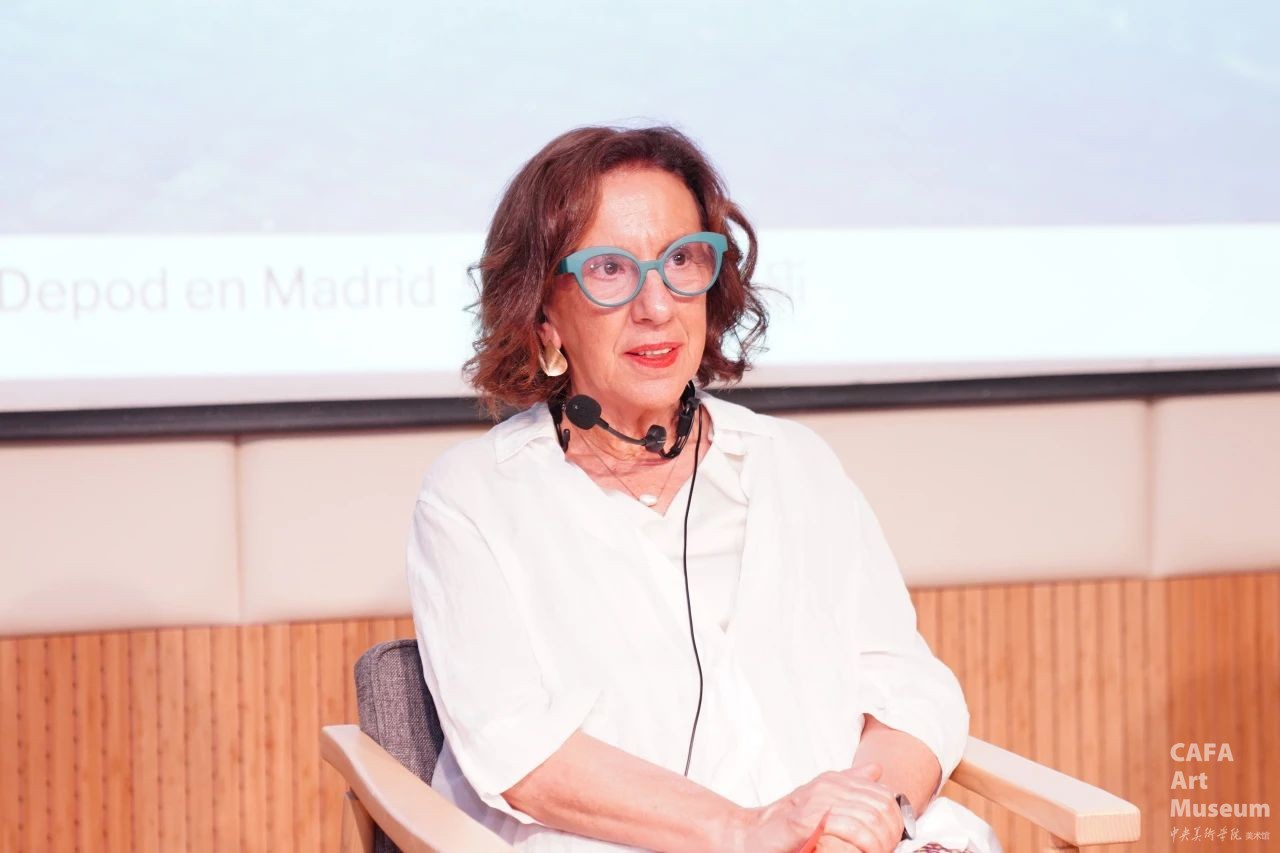
Isabel Cervera, Director of the Cervantes Institute in Beijing
01
The Development and Changes
of CAFA Art Museum
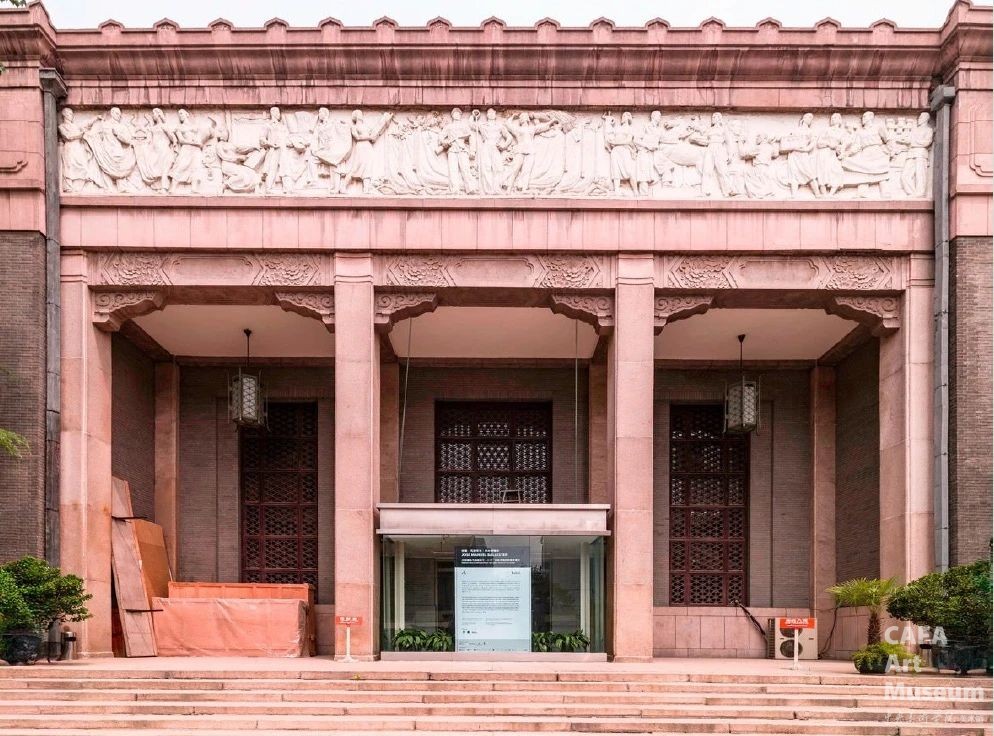
The old site of CAFA Art Museum, Photographer: José Manuel Ballester
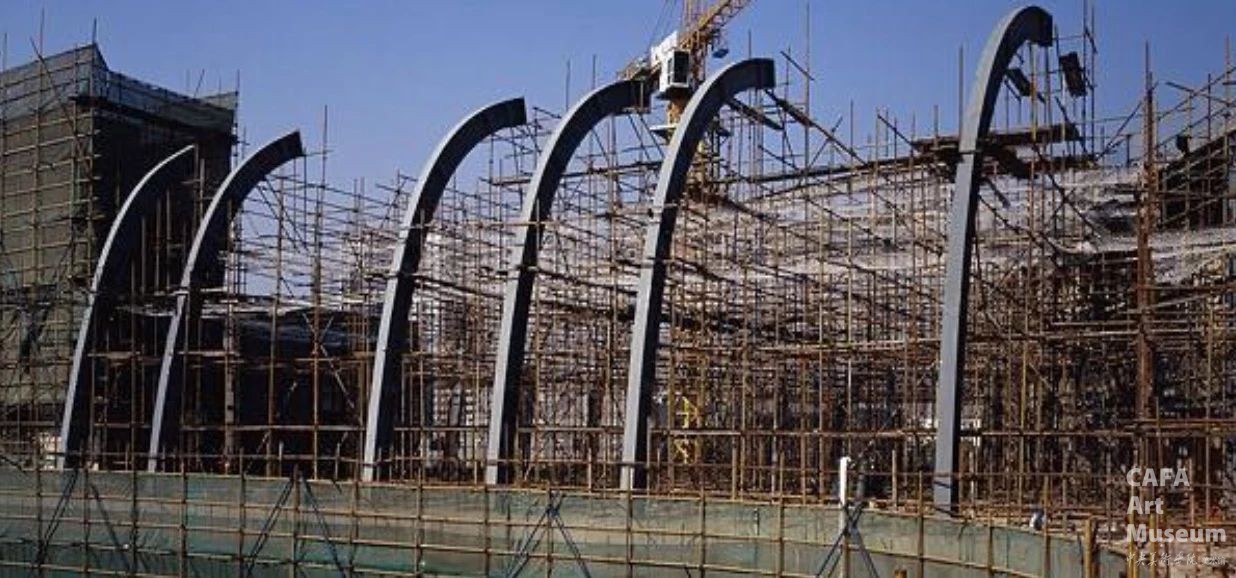
The new site of CAFA Art Museum under construction Photographer: José Manuel Ballester
Isabel invited Professor Jin Jun to talk about the development and changes of CAFA Art Museum by displaying the contrast between the old and new buildings of the museum. Jin Jun mentioned that the old site of CAFA Art Museum was built in the 1950s and was an important cultural building at that time, witnessing China's progress from tradition to modern civilization and industrialization. Today, the Art Museum of the Central Academy of Fine Arts has developed into a modern model in terms of construction and operation management. Although it is not large in scale, it has perfect functions. This not only reflects the museum's own development over more than half a century but also is a significant symbol of the progress of Chinese culture, art, and modern civilized society, demonstrating China's achievements in the construction of museums and art galleries from a global perspective.
02
The Characteristics of Museums
in Different Regions

Doria Pamphilj Gallery in Rome

The Temple of Dendur, Metropolitan Museum of Art, New York
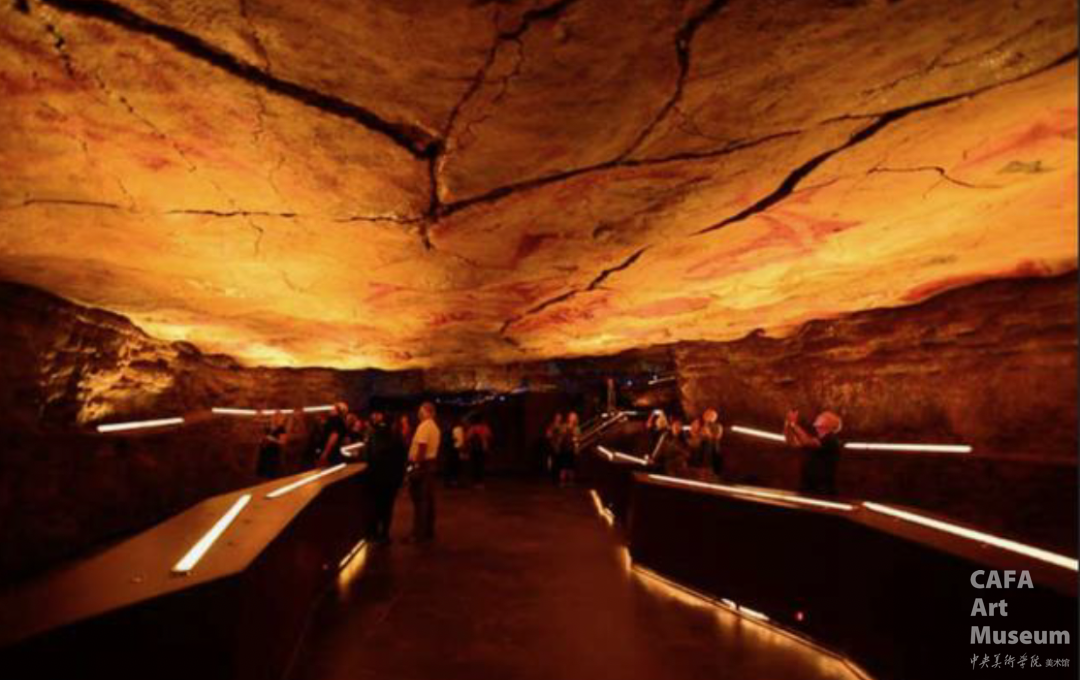
Altamira New Cave (Replica Cave)

Mogao Grottoes, Dunhuang
Isabel showed the audience live scenes of museums and art galleries in different regions of the world. Muela launched into a discussion about the evolution and definition of museums. Combining his personal experiences and academic perspective, he presented profound reflections on museum culture: He expressed his love for museums and mentioned that he has always tried to explore why he is so fascinated by them, as well as the commonalities among different museums, but found it difficult to define them clearly. Although different types of museums (art, history, science and technology, etc.) have distinct functions, they can all evoke similar spiritual touches. Muela noted that "cultural management is more complex than it appears," and museums need to simultaneously act as "guardians of history," "disseminators of knowledge," "social interlocutors," and even "drivers of the economy," requiring them to find a balance among diverse demands.

Temple of Debod, Madrid
In particular, Muela focused on sharing the background, relocation, exhibition, and significance of the Temple of Debod in Madrid. Built in the 2nd century BCE, the temple was originally located in the village of Debod near Aswan, Egypt. In the 1960s, as Egyptian historical sites faced the risk of submersion, Spanish engineers assisted in relocating the relics. As a gesture of gratitude, Egypt donated the Temple of Debod to Spain. It was later reconstructed in Madrid's Western Park, maintaining its original east-west orientation from Egypt, and opened to the public in 1972. The temple allows Spaniards and Europeans to directly experience an ancient foreign civilization without traveling to Egypt, enriching the diversity of local cultural landscapes, promoting cultural exchange, and expanding their own cultural horizons. Today, the Temple of Debod at sunset has become a major highlight of Madrid.
03
The Characteristics and Collection Mechanism
of CAFA Art Museum

The exhibition site of "Collection of CAFA Art Museum- Modern Chinese Art"

The exhibition site of "Collection of CAFA Art Museum"
When talking about the characteristics and collection mechanism of the CAFA Art Museum, Jin Jun introduced that although the museum is affiliated with the academy, it remains a public art institution and undertakes the basic mission of a public cultural and artistic institution. Relying on the Central Academy of Fine Arts and working closely with various professional departments of the school, it has a direct research and teaching background, giving it more advantages in creation than other art museums. In the process of nearly a century of development, it has accumulated nearly 30,000 collections involving ancient and modern times, combining Chinese and Western works, including ancient cultural relics, modern and contemporary art, and ancient calligraphy and painting, providing rich resources for teaching, research, and exhibitions. The museum not only displays historical works from traditional collections but also presents the latest creations of young artists, such as the annual graduation season exhibitions, which attract a large number of visitors, providing a communication platform for teachers, students, and the public, and promoting the spread and promotion of art. Through functions such as collection, display, and education, it fulfills various functions of aesthetic education in society, helping the public understand artworks and enhancing the public's artistic awareness.

2025 CAFA Graduation Season
Jin Jun also mentioned that the construction of the museum's donation and collection system relies on diversified cooperation and historical accumulation. Through an open donation mechanism, the museum establishes cooperation with all sectors of society, forming dual support in terms of funds and collections. The participation of social forces not only broadens the collection channels but also enables the museum to more widely absorb different types of artworks and improve the public collection system. In addition, the excellent works accumulated by the Central Academy of Fine Arts over the past century have also enriched the museum's collections. The outstanding works created by teachers and students over the years, especially the representative achievements of Chinese art creation in the 20th century, present a relatively complete creative context. These collections are not only precious resources for the school's teaching and research but also display the evolution of Chinese fine arts to the public through exhibitions, becoming an important carrier of public cultural memory. Therefore, the combination of historical accumulation and social donations has made the collections of CAFA Art Museum both academically profound and publicly oriented, serving both art education and public aesthetic education.
04
The Diverse Development and Integration Trends
of Chinese Museums and Art Galleries
After seeing the data display of the number of museums and art galleries in China and the number of visitors, Muela lamented the rapid growth and diversification of Chinese cultural and artistic institutions. From ancient to modern, and from physical to digital, different types demonstrate the richness and innovation of China's museum system. Subsequently, in response to this phenomenon, Jin Jun expressed his views and analyzed it from three dimensions: the rise of multiple types, the expansion of spatial functions, and the opportunities of technological integration: 1. Emergence of Diverse Types of Institutions: From Comprehensive to Specialized Collection Ecosystems Public museums and art galleries in China have rich collections, systematically presenting Chinese history, art, and culture, serving as the cornerstone of public culture. Meanwhile, thematic collections have emerged: a large number of small and medium-sized thematic museums, such as those focusing on automobiles, matches, silk fabrics, furniture, snuff bottles, lighters, and other niche fields, interpret cultural diversity from unique perspectives. In addition, many Chinese cities, including Guangzhou, Shenzhen, Suzhou, and Chengdu, are actively constructing large-scale museums and art galleries. These venues have superior hardware conditions. Although their collections need time to accumulate, they actively promote art communication through exhibitions. 2. Cross-Border Expansion of Spatial Functions: From Single Display to Diverse IntegrationModern art galleries are breaking through traditional boundaries, becoming composite spaces for art integration and public life, and actively exploring deep integration with visual arts and performing arts (dance, music, drama). For example, the Art Museum of the Central Academy of Fine Arts has held integrated exhibitions of dance and art practices to explore more possibilities of spatial narration. 3. Technological Empowerment and Opportunities of the Times: Dual Challenges of Communication and InheritanceWith the help of the Internet and digital technologies, such as online exhibitions and virtual tours, art institutions can break through physical space limitations, expand cultural influence, and enable more of the public to access art resources. This presents both opportunities and challenges. In this process, art galleries and museums are not only containers of art but also core forces promoting the improvement of social aesthetics and the construction of cultural confidence.

Group photo of the guests
At the conclusion of the event, the three guests delivered summaries, stating that the realization of an art museum's value requires the joint promotion of public participation and cross-cultural dialogue. The display of art across regions and eras breaks the original context, enabling audiences to reinterpret works in new temporal and spatial dimensions, thus forming "new possibilities for cultural dialogue." This will enhance the richness of artistic discourse and make art museums a realm where cultural confidence and openness coexist.

Event Site

Audience Q&A Session
Biographies of the Guests
-
Jin Jun
Digital artist, currently serving as the Director of CAFA Art Museum, as well as a Professor and PhD Supervisor at the School of Design of the Academy. He has previously held positions such as Director of the Digital Media Teaching and Research Section and Vice Dean of the School of Design at the Central Academy of Fine Arts. His career integrates art, design, and technology, holding a Bachelor's Degree in Electronic Engineering from Tsinghua University and a Master's Degree in Art and Design from Boston University in the United States. With this interdisciplinary background, he has long been committed to innovative exploration and teaching practice in the intersection of art, design, and technology. His research directions include: digital dynamic media art research, immersive experience and game design, and digital twin design research.
Juan José Herrera de la Muela
A senior diplomat and art history scholar, he has long been dedicated to the study of cultural power relations, with a particular expertise in the field of cultural diplomacy. He has served as the Extraordinary Ambassador for the "Spain-Russia Bilateral Cultural Year" and Ambassador for Public and Global Affairs of Spain. He also served as President of the Asia House in Barcelona, Cultural Counselor in Moscow, Diplomat to Bolivia, and Cultural Consul in New York. During his tenure at the Spanish Ministry of Culture, he was a member of the Advisory Committee to the Secretary of State for Culture and Deputy Director of the Department of Music and Dance. Later, he served as Director General of the Department of Museums and Music in the Madrid City Government and President of the Spanish Geographical Society from 2012 to 2015. He holds a bachelor's degree in law and corporate legal consulting, as well as a master's degree in art history from the Institute of Fine Arts at New York University. Over the years, he has collaborated with multiple national and international cultural institutions, published numerous articles, and actively participated in international biennials and university projects. In addition, he founded the "Voice of the East" (tentative translation) book series at the 21st Century Publishing House.
Editor-in-Chief / He Yisha
Editor / Du Yinzhu
